PPE for Welders [Updated for 2023]
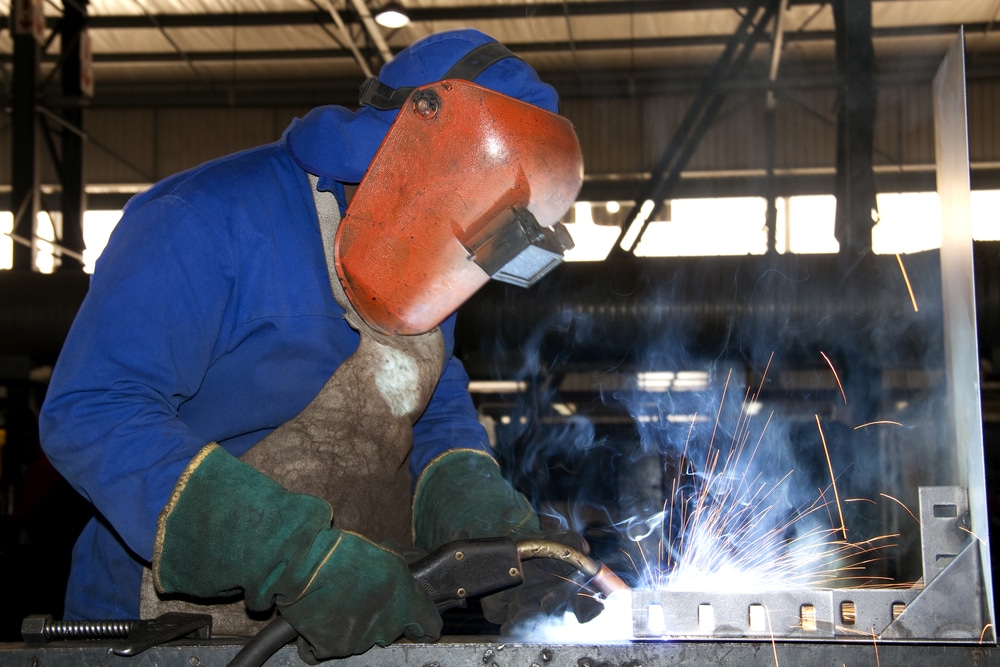
Welding is a dangerous profession. In addition to having a facility that meets OSHA standards and has well-trained employees, welders need personal protective equipment (PPE) to keep them safe.
There are many pieces of welding personal protective equipment that someone should wear before they come near a line. Read on to learn more about this equipment and how to protect yourself! We also have a more comprehensive Welding Safety Training Video that you can check out as well.
Eye and Face Protection
There are multiple grades of eye and face protection that can be used depending on the exact work an employee does.
A welding beanie, a welding helmet, a face shield, or safety goggles are all options when it comes to personal protective equipment. Check the American National Standards Institute (ANSI) standards applicable to your work. ANSI Z87.1-1989 and ANSI Z89.1-1986 are two standards you should be aware of.
Safety glasses should feature side shields in order to protect the eyes from all angles. While some of these are properly rated for this type of work, others aren’t – always check the manufacturer’s label.
Hand shields, which are a handheld form of face protection, should only be used by short-term or occasional observers. Hand shields are not an adequate replacement for welding goggles or other welding PPE for employees. Really, you should consider using a welding safety checklist to ensure that all of your PPE is in place.
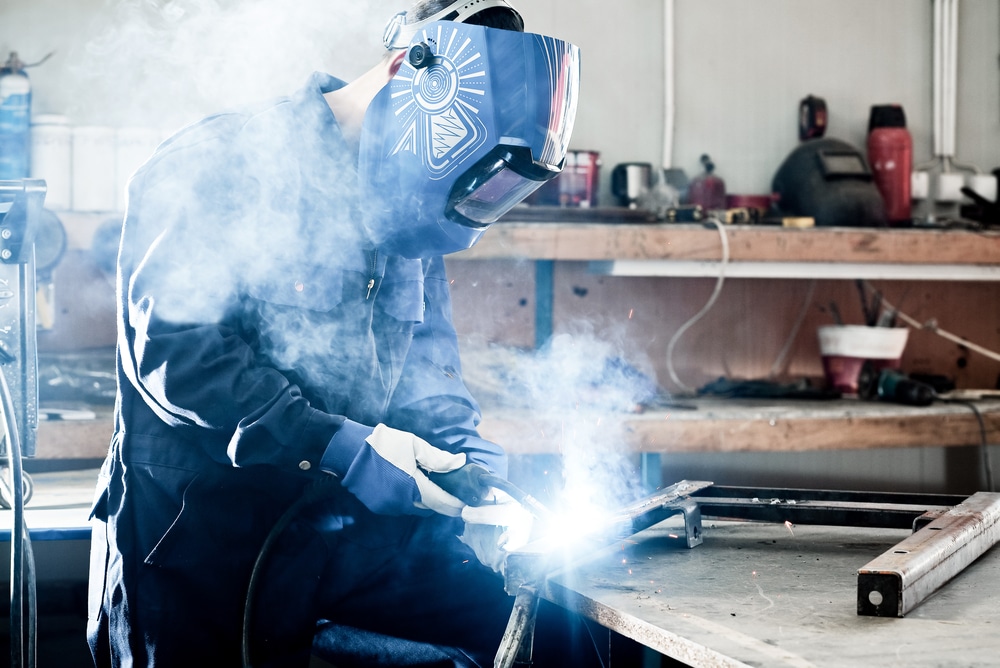
Why are a Welding Helmet, Safety Glasses, and a Face Shield So Important?
Hot slag, metal, and sparks can burn delicate face skin, blind, and even kill. Workers should always wear their welding PPE while actively working or near someone who is. This is the case even if it means wearing a welding helmet or welding goggles all day. OSHA does outline requirements on PPE for welders and those should be followed. Depending on the type of welding being done the PPE requirements might be different.
Intense light and ultraviolet radiation from arc welding can also cause temporary or permanent blindness. Eye protection in general and arc flash protection, in particular, may help lower the risk of ocular cancer from UV exposure.
Welding helmets are also important to protect from falling objects and flying objects, for instance, if working outdoors on a construction site.
Hand Protection
There are multiple kinds of protective welding gloves – you can choose between goat and cow leather cut-resistant gloves. There are many varieties depending on the kind of dexterity the welding project needs.
ANSI has specific standards for welding gloves that should be followed when purchasing PPE for your employees. See ANSI Z49.1 for more details.
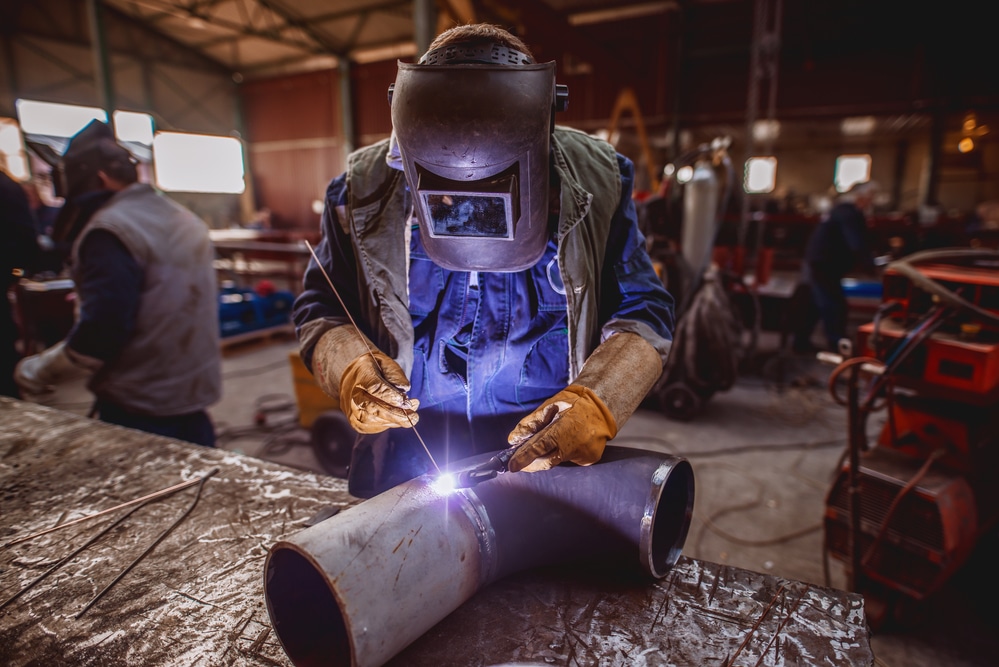
Why Is Hand Protection So Important in the Welding Process?
The hands are the closest part of the body to the danger area. Hot metal, sharp objects, and flying sparks can cause serious, third-degree burns.
Leather gloves help to prevent burns and chemical exposure while still being easy to move around in. Workers should always have the range of motion in their hands and fingers that the project requires.
Ear Plugs and Hearing Protection
OSHA requires you to implement a hearing conservation program for employees exposed regularly to noise hazards of 85 dB or above. That’s about the volume of a forklift or blender- you can test your workspace with a sound level meter.
You can use either suitable plugs in the ear canal or ear muffs that work with the rest of your welding PPE. Ear protection should never interfere with helmets, face shields, or other forms of head, face, and neck protection.
For more information, see the relevant standard ANSI S3. 19.
What Is Appropriate protection for Your Ears?
When compared to wearing a welding helmet or welding gloves, ear protective clothing is talked about much less. But noise hazards are real and can cause serious injury to employees.
Prolonged exposure to the loud noises around the welding process can cause serious hearing loss. Things like hot slag and flying sparks can also get into the ear canal.
Your hearing conservation program may also involve guidelines about when and where certain noisy work can be done.
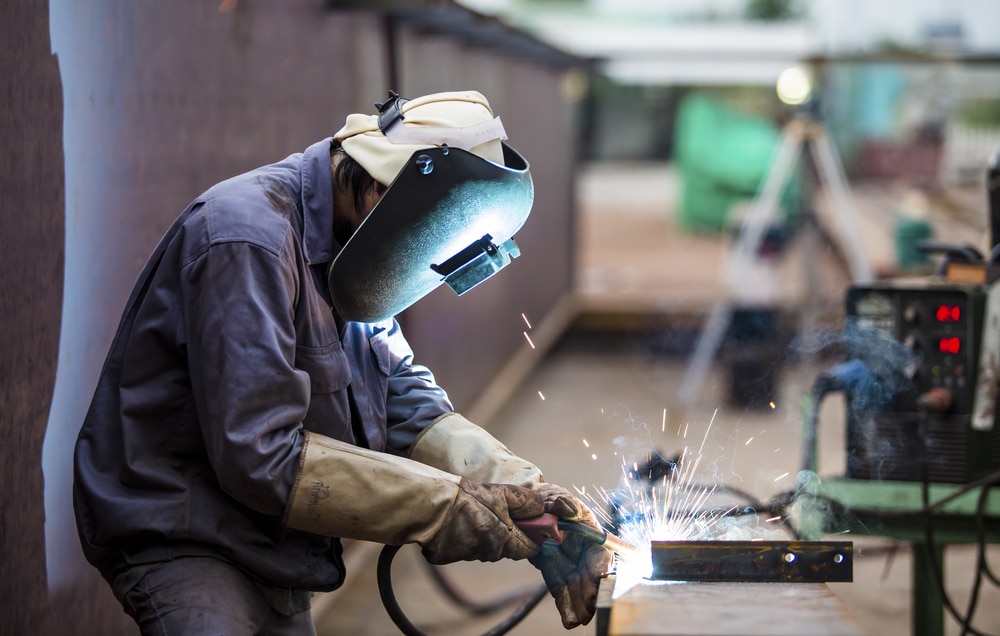
Skin Protection
You may not think of skin protective clothing as important as safety glasses, but it’s vital to keeping people safe.
Bare skin should always be covered when in welding areas. This will protect welders from not just burns, but also UV radiation.
Clothing should be a close weave of cotton, wool, or other natural fiber, preferably treated with flame retardant coatings. Synthetic fibers like polyester should never be used – in an emergency, they will stay close to the skin and melt. They will also release toxic and hazardous substances into the air.
Cuffs, pockets, and gaps are dangerous for welders. A welding jacket and welding spats can help ensure there’s no part of the skin that’s exposed and there’s nowhere sparks can get trapped.
What Are The Dangers to Your Skin from Welding?
Flying sparks and hot metal can burn skin and set clothes on fire. Wearing synthetic fibers can turn a minor accident into one that causes serious burns.
It’s also important to have protection from UV radiation – arc welding exposes workers to the full UV spectrum and may increase skin cancer risk.
Foot Protection
Even foot protection is vital for any welding project. You can wear any safety shoes that comply with the relevant regulations, ASTM F2413-05 or ANSI Z41.1-1991.
Most safety shoes tend to be made of sturdy leather and feature a reinforced steel toe. Closed-toed and high top shoes are a must.
How Can Welding Damage Your Feet?
Hot slag and falling objects can break bones and cause serious injury. Shoes need to also fit well to help avoid slipping and tripping.
Employees generally provide their own footwear, but safety education can give them the information they need to purchase effective protection.
Lung Protection
Because of the toxic fumes that welding can produce, safety professionals recommend several different methods of lung protection.
Air quality testing should be performed regularly to ensure any dangerous chemicals are below maximum allowable concentrations. Local exhaust systems and mobile fume hoods can help to remove gases directly from the source.
If local methods don’t work for whatever reason, mechanical ventilation can help to increase airflow and reduce exposure in certain concentrated pockets.
In certain situations, it may be more suitable for operators to wear respirators. OSHA does not require them for all welding operations (see 29 CFR 1910.134) but they are industry standard for gas metal arc welding, among other tasks.
What are the risks to your respiratory system?
All types of arc and gas welding can put high concentrations of toxic and hazardous substances into the air. If not properly protected, employees can both experience acute respiratory distress and increase their risk of certain cancers.
Welding fumes are nothing to mess around with and appropriate protection is a key part of a welder’s protective gear.
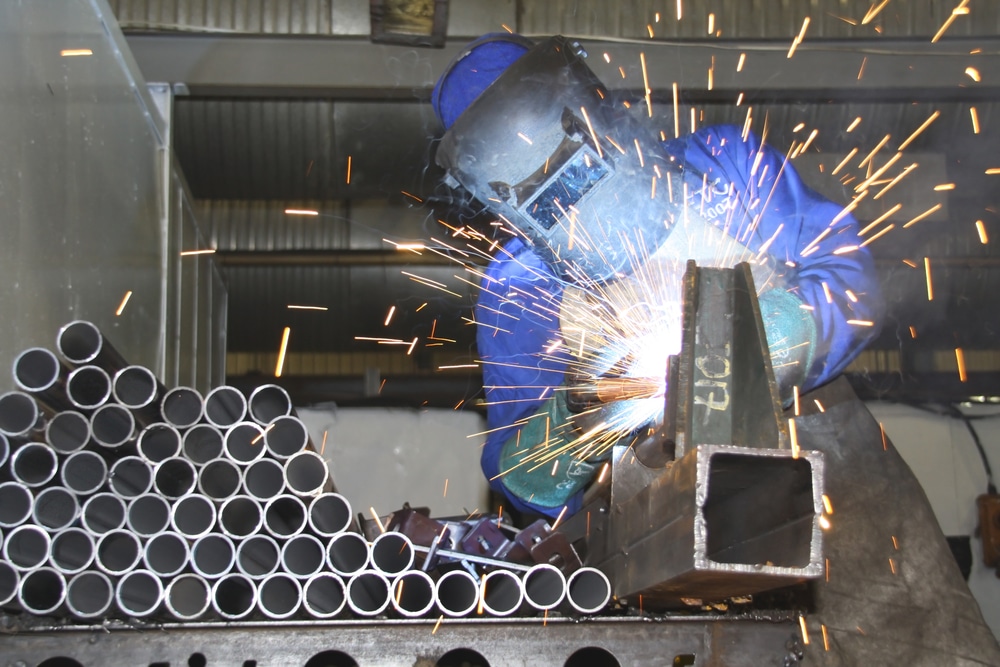
Personal Booths and Protective Screens
When possible, welders should work behind a protective screen or in a personal booth. These shields help to protect others not in the welding space and should be non-combustible as well as rated for UV protection.
While protective booths are often made of fiberglass, polyurethane, or other flame-resistant material, they should be built to allow for air circulation at foot height. This is important to prevent the buildup of toxic gases.
Booths may have welding curtains made out of polyurethane to provide four-sided protection.
Do I really Need to Use a Protective Screen?
The workflow may not always permit a protective screen, but it should be used whenever possible. Welding safety is not only about protecting employees who weld. It’s about protecting everyone on the shop floor.
Screens, booths, and curtains protect surrounding workers from noise, bright light, certain respiratory risks, and high temperatures. If you are not working in a dedicated room or space, they are vital.
Screens and many respiration systems are an example of engineering controls or physical changes to an environment to make a process safer. OSHA recommends these as even more effective controls than changing how people work or providing PPE.
Welding Hazards
There are many common welding safety hazards. Welding PPE is key for protecting employees from these risks.
Hazardous Substances
Slag, metal, and other substances involved in the process can be incredibly toxic, especially when inhaled. It’s important to provide protection from these hazards.
UV exposure is another hazardous substance – appropriate eye protection and skin coverage can help.
Chemical Exposures
Welders can be exposed to chemicals through their both their lungs and their skin. That’s why Safety professionals recommend covering all skin and providing appropriate respiratory protection.
Additional Protection
Welding blankets made out of carbon felt or fiberglass can help protect furniture and equipment from dripping slag or metal. Some blankets can get wet, while others should not be soaked- take a look at yours before you use it.
Engineering controls should also be implemented in your organization. These are physical changes to your workplace and can involve switching to using more robotic welding or building a dedicated space.
Importance of Proper Welding Safety Personal Protective Equipment: Final Thoughts
Your workers need to be up-to-date on proper welding PPE as well as OSHA standards and regulations. Videos and online classes can be great resources.
The best training materials cover everything workers need to know for a safe career in the welding industry and follow it up with testing to ensure compliance. Keep your workers safe today!
FAQ
What Is Proper Attire for Welders?
The basics of welding PPE are face protection, respiratory protection, hand, foot, and skin protection, eye and ear protection, and protection of others on the floor.
Proper attire for welders varies depending on the exact job and, sometimes, the preferences of the welder themselves. Employees should have comfortable and properly fitted welding PPE.
Why Do We Use PPE When Performing Welding?
There are few jobs that require PPE as much as welding – maybe only surgeons and firefighters wear more. Both acute and long-term dangers can cause death or disfiguring injury.
Modern technology in materials and equipment allows us to drastically lower the risks of the profession, protecting employees’ safety and productivity.
Are Jeans Safe for Welding?
Generally speaking, yes, jeans are safe for welding. A close-weave cotton fabric like denim is fire-resistant but relatively lightweight and easy to move in.
Wool is the most flame-retardant fabric, but it can be expensive, uncomfortable, and hard to take care of.
What are the Most Common Welding Injuries?
The most common injuries in the industry are burns. You can prevent these by wearing the personal protective equipment welding requires.
Injuries to the eyes from UV light are also common- you should wear a face shield or other appropriate eye protection. Welding helmets can also help.
Toxic fume inhalation is also a risk depending on the types of metal and slag being used. Electrocution can also be a risk.
Welding is a dangerous profession, and PPE should always be worn to protect from various hazards.